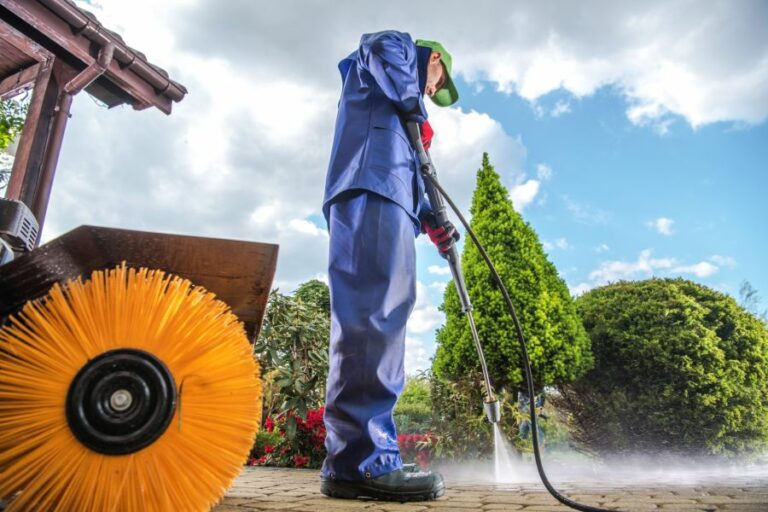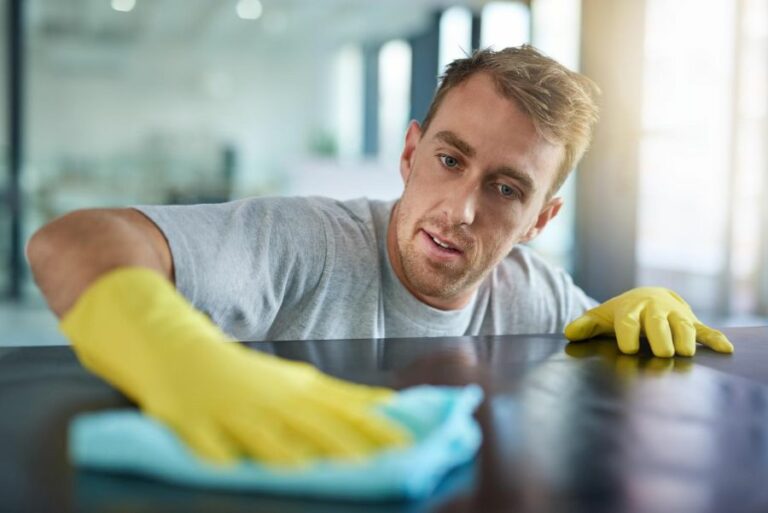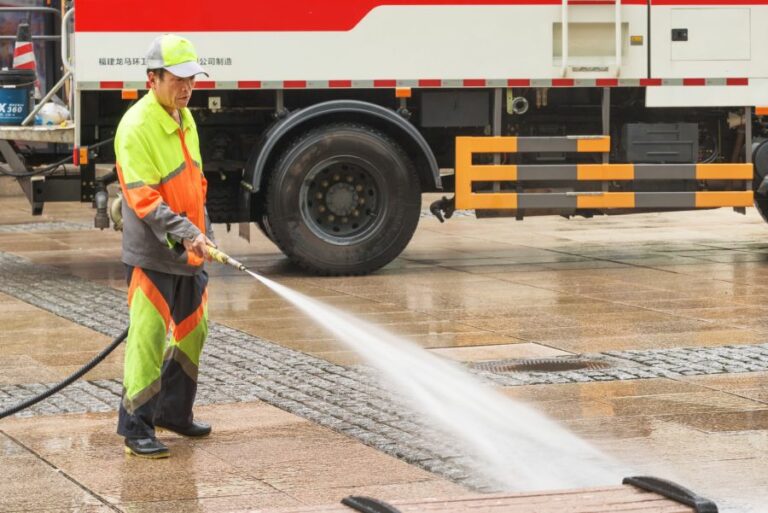Top Abrasives For Efficient Surface Preparation. What Pros Say
When it comes to achieving the perfect finish for your project, the importance of efficient surface preparation cannot be overstated. Selecting the right abrasive material is crucial not only for a smooth and polished outcome but also for saving time and effort. Luckily, we’ve done the research, and we’re here to help you identify the top abrasives on the market to ensure you’re equipped for success.
Top abrasives for efficient surface preparation:
Top abrasives for efficient surface preparation include aluminum oxide, silicon carbide, steel grit and shot, garnet, and ceramic media. These abrasives vary in durability, cutting speed, and applications, making them suitable for different surface preparation tasks, such as material removal, smoothing, deburring, and polishing.

Eager to achieve a perfectly prepared surface? Dive deeper as we reveal the top abrasives for efficient surface preparation, ensuring a smooth and professional finish every time. Keep reading to unlock the secret to flawless surfaces!
Contents
- 1 Best Abrasives for Effective Surface Prep
- 2 Optimal Abrasive Blasting Techniques
- 3 Garnet vs Grit Blasting: Which is Better?
- 4 Top Abrasive Media Choices for Wood
- 5 Ideal Abrasives for Metal Sanding
Best Abrasives for Effective Surface Prep
Surface preparation is a crucial step in many industries, including construction, automotive, and manufacturing. The proper selection and use of abrasives can significantly impact the quality and efficiency of the finished product.
– Aluminum Oxide: Versatile and Durable
Aluminum oxide is one of the most common abrasives and is known for its durability, versatility, and low cost. It is suitable for a wide range of surface preparation tasks, such as removing paint, rust, and other coatings, as well as smoothing and refining surfaces.
Aluminum oxide is available in various grit sizes, making it ideal for tasks that require coarse, medium, or fine abrasives.
Pro Tip: When selecting aluminum oxide abrasives, consider using a higher grit size for a smoother finish and a lower grit size for more aggressive material removal.
– Silicon Carbide: Ideal for Hard Materials
Silicon carbide is a synthetic abrasive that is particularly effective for surface preparation of hard materials, like metals, stone, and ceramics.
This abrasive has a very high cutting speed, making it ideal for rapid material removal and achieving a smooth finish. Silicon carbide is also known for its ability to resist breakdown, resulting in a longer product life.
Pro Tip: If your surface preparation task involves particularly hard or brittle materials, consider using silicon carbide abrasive for increased efficiency and durability.
– Steel Grit and Shot: Heavy-Duty Material Removal
Steel grit and shot are abrasives made from small, angular, or spherical pieces of steel, which are effective for heavy-duty surface preparation tasks.
These abrasives are known for their high-impact velocity and aggression, making them ideal for removing thick coatings, scale, and rust from surfaces. Additionally, steel grit and shot can be used for surface peening to create a uniformly rough surface profile.
Pro Tip: Keep in mind that steel grit and shot can result in a rougher finish, so they may not be suitable for tasks requiring a smooth, polished surface.
– Garnet: Eco-Friendly and Reusable
Garnet is a naturally occurring abrasive that is both environmentally friendly and reusable. Made from crushed stone or mineral rock, garnet abrasives offer high cutting speeds and the ability to recycle for multiple surface preparation tasks.
Garnet is well-suited for applications that are sensitive to environmental concerns, such as wet blasting or waterjet cutting.
Pro Tip: Garnet is a cost-effective, environmentally friendly abrasive choice for applications where the reuse of abrasive material is possible.
– Ceramic Media: Fine Finishing and Deburring
Ceramic media is a type of abrasive specifically designed for fine finishing, deburring, and polishing applications. It is available in various shapes, sizes, and compositions to accommodate a wide range of surface preparation needs.
Ceramic media is ideal for use in vibratory and mass finishing systems, making it an excellent choice for precision parts and delicate materials.
Pro Tip: Choose ceramic media with the right shape, size, and composition based on your specific surface preparation requirements to achieve optimal results.
• In Summary
Selecting the ideal abrasive for your surface preparation task is crucial to achieving efficient and effective results.
By understanding the specific properties and applications of aluminum oxide, silicon carbide, steel grit and shot, garnet, and ceramic media, you can choose the right abrasive for your needs and optimize your surface preparation process.
Always consider factors such as material hardness, desired surface finish, and environmental concerns when selecting an abrasive for your specific task.
Rank | Abrasive | Key Features |
|---|---|---|
1 | Aluminum Oxide | Durable, versatile, and affordable; ideal for cleaning, deburring, and surface preparation |
2 | Silicon Carbide | Extremely hard and sharp; perfect for etching, polishing, and non-metallic surfaces |
3 | Garnet | Environmentally friendly, reusable, and suitable for delicate materials like glass and aluminum |
4 | Steel Shot / Steel Grit | Fast and aggressive surface preparation; great for hard surfaces and removing rust and paint |
5 | Ceramic Media | Long-lasting, aggressive, and ideal for deburring and finishing metal parts |
6 | Glass Beads | Environmentally friendly, delivers satin or matte finish on surfaces, used for light cleaning and peening |
Optimal Abrasive Blasting Techniques
Choosing the best abrasive blasting method is crucial for achieving optimal results in surface preparation and cleaning, as well as maximizing your efficiency and return on investment.
• Dry Blasting
Dry blasting is one of the most common abrasive blasting techniques. It involves propelling a dry abrasive media using compressed air to remove contaminants, paint, or rust from surfaces, providing a clean surface for painting, coating, or other applications.
– Advantages of Dry Blasting
- Effectiveness: Dry blasting is highly effective in removing contaminants and creating a smooth, clean surface.
- Range of Abrasive Media: A wide variety of abrasive media, such as sand, glass beads, steel grit, and more, can be utilized, providing versatility and flexibility based on the requirements of the project.
- Ease of Use: Dry blasting systems are relatively easy to operate, ensuring minimal downtime and training required.
• Wet Blasting
Wet blasting, also known as vapor blasting or slurry blasting, combines abrasive media with water, resulting in a more controlled and less aggressive process compared to dry blasting.
The dampened abrasive media reduces friction, heat, and dust generation, making it ideal for delicate and heat-sensitive applications.
– Advantages of Wet Blasting
- Reduced Dust: The water used in wet blasting effectively suppresses dust, resulting in a cleaner working environment and improved visibility.
- Less Aggressive: Wet blasting is less aggressive than dry blasting, making it suitable for delicate and heat-sensitive surfaces.
- Decreased Media Consumption: The addition of water helps to reduce the amount of abrasive media required.
• Dustless Blasting
Dustless blasting is a form of wet blasting that combines water and abrasive media with a rust inhibitor, preventing the formation of flash rust on the treated surface. Dustless blasting is environmentally friendly and significantly less aggressive than dry blasting, making it ideal for sensitive surfaces.
– Advantages of Dustless Blasting
- Environmentally Friendly: Dustless blasting uses water to suppress dust and contains the debris within the water, making it easier to collect and dispose of safely.
- No Flash Rust: The rust inhibitor used in dustless blasting prevents flash rust, maximizing the lifespan of the treated surface.
- Versatility: Dustless blasting can be used for various applications, including automotive restoration, marine maintenance, graffiti removal, and more.
• Vacuum Blasting
Vacuum blasting, or vacuum-assisted blasting, incorporates a vacuum unit within the blasting equipment to collect spent abrasive media, dust, and contaminants.
This closed-loop system prevents environmental contamination and reduces cleanup time, making it suitable for indoor applications or areas with strict environmental regulations.
– Advantages of Vacuum Blasting
- Cleanliness: The closed-loop system maintains a clean working environment by capturing and containing dust and debris.
- Reduced Cleanup Time: Vacuum blasting streamlines the cleanup process by containing spent abrasive media within the unit.
- Compliance with Regulations: The controlled system makes vacuum blasting suitable for areas with strict environmental regulations, such as work on bridges, pipelines, or refineries.
• Selecting the Best Abrasive Blasting Method
The best abrasive blasting method for your project depends on various factors, including the type of surface to be treated, the desired outcome, and your budget.
It’s crucial to assess your specific needs and consult with an abrasive blasting professional to ensure you choose the most appropriate and efficient technique.
In summary, dry blasting is effective for a wide range of applications, but can be aggressive and produce more dust compared to other methods.
Wet blasting and dustless blasting are excellent choices for delicate, heat-sensitive surfaces, while vacuum blasting is ideal for indoor applications or projects with strict environmental regulations.
By choosing the best abrasive blasting method for your specific needs, you’ll achieve optimal results while maximizing efficiency and return on investment.
Type | Description | Pros | Cons |
|---|---|---|---|
Sandblasting | Uses sand particles as the abrasive material to remove surface contaminants and coatings. | Inexpensive and widely available; effective for various applications. | Can create dust hazards and cause surface warping; not suitable for delicate substrates. |
Soda blasting | Uses sodium bicarbonate (baking soda) particles as the abrasive to clean delicate surfaces and remove coatings. | Environmentally friendly and non-toxic; gentle on delicate surfaces; doesn’t produce heat. | Less effective on heavy contaminants; high media cost; limited reusability. |
Glass bead blasting | Uses fine glass beads to create a smooth and polished surface finish. | Environmentally friendly and gentle on surfaces; quick cleaning time; produces matte finish. | Low aggressive; not suitable for removing heavy coatings; costlier than sandblasting. |
Steel shot blasting | Uses spherical steel shots as the abrasive; ideal for heavy-duty blasting applications like removing paint or rust from metal surfaces. | Aggressive and highly effective; recyclable and reusable media; uniform surface treatment. | Can damage softer materials; higher initial cost. |
Garnet vs Grit Blasting: Which is Better?
– Understanding Garnet Blasting and Grit Blasting
Before diving into the comparison between garnet blasting and grit blasting, it is essential to have a clear understanding of the two techniques.
Both garnet blasting and grit blasting are cleaning and surface preparation methods used for removing hard-to-remove contaminants (like rust, old paint, and grime) and imparting a particular surface finish.
- Garnet blasting is a process where garnet abrasive, natural mineral sand, is used as the blasting media. Garnet possesses excellent hardness, density, and durability, which make it an ideal option for abrasive blasting.
- Grit blasting, on the other hand, employs different abrasive materials, such as steel shot, steel grit, glass bead, and more. These materials are generally required to give a particular roughness or smoothness to the surface being treated, depending on the desired finish.
– Efficacy and Efficiency
One of the primary factors to consider when deciding between garnet blasting and grit blasting is the efficacy and efficiency of both the techniques. Garnet abrasive is known for its high average specific gravity and ultimate hardness.
This makes garnet more effective in removing tough contaminants from various surfaces. Additionally, garnet blasting results in low dust generation, increasing visibility and keeping the work environment clean.
Comparatively, grit blasting materials like steel shot and glass beads possess varying levels of hardness and specific gravity. This variation results in grit blasting being less effective when it comes to efficiently removing stubborn contaminants.
I recommend using garnet blasting when a high degree of surface cleanliness is required, as it can remove contaminants without damaging the substrate effectively.
– The Versatility of Surface Preparation Techniques
Garnet blasting is versatile, as it can be used for various applications, ranging from heavy-duty cleaning and surface preparation to selective coating removal and surface profiling.
Garnet’s range of sizes and types make it a suitable choice for various industries, including shipbuilding, aerospace, automotive, and more.
Grit blasting also offers versatility, albeit to a lesser extent when compared to garnet blasting. Specific abrasive materials may be more suited to certain applications, but the overall range is usually not as wide as within the garnet blasting category.
– Environmental Friendliness
One often overlooked aspect when comparing garnet blasting with grit blasting is the environmental impact of the blasting media. Garnet is a natural, inert material that is recyclable up to five times, which helps reduce its environmental footprint.
On the other hand, grit blasting materials are usually artificial and derived from industrial processes. These materials often contain traces of metals that can be harmful to the environment if not disposed of correctly.
Furthermore, some grit blasting media are only recyclable once or twice, leading to increased waste generation.
I recommend using garnet blasting if environmental concerns are a critical factor for your project, as its recycling capabilities and natural origin make it more eco-friendly than grit blasting alternatives.
– Cost Implications
A cost comparison between garnet blasting and grit blasting depends on various factors, including the specific abrasive material, quantity required, and the frequency of usage. Since garnet abrasive can be recycled multiple times, it can lead to cost savings in the long term.
This factor is particularly attractive to industries that require frequent abrasive blasting operations.
While initial costs for some grit blasting materials might be lower than garnet, the reduced recyclability and environmental impact may lead to added disposal expenses and potential penalties in the long run.
– Conclusion
To summarize, garnet blasting possesses certain advantages over grit blasting, such as higher efficacy, versatility, environmental friendliness, and cost-effectiveness. However, the suitability of each technique largely depends on the specific requirements and preferences of the project at hand.
In many cases, I recommend optng for garnet blasting when efficiency, quality, and environmental concerns play a significant role in the decision-making process.
Top Abrasive Media Choices for Wood
As a skilled craftsman with experience in woodworking, I understand the importance of selecting the right abrasive media when working with wood.
Abrasive media is essential for shaping, smoothing, and finishing wood surfaces. Choosing the right abrasive media can significantly affect your project’s final outcome.
• The Importance of Abrasive Media in Woodworking
Wood is a valuable material prized for its beauty, workability, and versatility. However, it can often have rough surfaces, uneven edges, or unwanted blemishes. These imperfections can cause issues when constructing objects, applying finishes, or attempting to achieve a professional appearance.
Abrasive media is a crucial aspect of woodworking, as it allows craftsmen to remove these imperfections and create a smooth surface. The right abrasive media will enable you to efficiently and effectively abrade wood to achieve the desired finish or shape without damaging the material.
• Types of Abrasive Media for Wood
There are various types of abrasive media available for woodworking, each offering unique benefits for specific applications. Understanding these different types and their uses is critical for selecting the best abrasive media for your project.
– Sandpaper
A popular choice for woodworking projects, sandpaper consists of abrasive grits made from various materials adhered to paper backing. Sandpaper is available in a wide variety of grit sizes, allowing you to choose the appropriate level of abrasion for your project.
Common abrasive materials used for sandpaper include:
- Aluminum oxide: Long-lasting and durable, aluminum oxide is well-suited for hardwood, giving it a professional finish. It’s also an excellent option for power sanding.
- Silicon carbide: A very aggressive abrasive, silicon carbide is commonly used for rough sanding or when removing a large amount of material from a wooden surface. It’s also effective for wet-sanding, making it suitable for use with water-based finishes. Silicon carbide breaks down quickly, providing a fresh cutting surface for each use.
- Garnet: By far the least aggressive abrasive of the group, garnet is best for woodworking projects that require light sanding with a fine abrasive. It breaks down over time, which makes it less suitable for heavy-duty woodworking tasks.
– Sanding Sponges
Sanding sponges are a flexible alternative to sandpaper, consisting of abrasive grits bonded to foam. They are excellent for sanding curved surfaces, tight spots, and intricate details on wooden objects.
Sanding sponges are washable and reusable, making them an economical choice for small woodworking projects.
– Steel Wool
Steel wool is made from fine strands of steel, providing a versatile abrasive for woodworking. It is useful for removing rust, wax, and light dirt from wooden surfaces while maintaining a gentle abrasion effect.
It’s also applicable for polishing, blending, and dulling surfaces. Steel wool is available in different grades, ranging from super fine to coarse.
– Non-Woven Pads
Non-woven pads are composed of synthetic fibers embedded with abrasive grits, making them suitable for light sanding and finishing tasks.
They are often used for scuffing between coats of finish or buffing surfaces to a high shine. Non-woven pads provide an even sanding pattern without the risk of cutting into the wood’s surface.
• Factors to Consider When Choosing Abrasive Media
Selecting the best abrasive media for your woodworking project depends on various factors, including:
- Material: Different abrasive materials are better suited for specific types of wood. For instance, aluminum oxide sandpaper is ideal for hardwood, while garnet is best for softwood.
- Grit Size: The grit size determines the level of abrasion. Coarser grits are used for removing material quickly, while finer grits are used for smoothing and polishing.
- Shape and Surface: The shape and complexity of the wooden surface dictate which type of abrasive media to use. For instance, sanding sponges are excellent for curved surfaces, while sandpaper is ideal for flat surfaces.
- Type of Finish: Consider the type of finish you intend to apply to the wood, as certain abrasive media are better suited for specific finishes. Silicon carbide sandpaper works well with water-based finishes, while aluminum oxide is perfect for oil-based products.
• Final Recommendations
In conclusion, there is no “one-size-fits-all” abrasive media for woodworking projects. Each type of abrasive media provided in this guide has specific advantages for distinct applications.
By considering factors such as material type, grit size, and project needs, you can determine which abrasive media is best suited for your specific woodworking project.
For most general woodworking tasks, I recommend starting with high-quality aluminum oxide sandpaper, as it offers durability and versatility across a range of projects.
For curved surfaces and intricate details, sanding sponges are an excellent choice, while steel wool and non-woven pads are suitable for light sanding and finishing tasks.
By using this comprehensive guide, you can select the best abrasive media for your woodworking project and achieve a professional, beautiful finish.
Abrasive Media | Description | Benefits |
|---|---|---|
Garnet | Garnet is a natural, inert mineral abrasive | Effective at removing paint and finishes, environmentally friendly, reusable multiple times |
Aluminum Oxide | Aluminum Oxide is a synthetic, durable abrasive | Long-lasting, sharp cutting edges, efficient at sanding and polishing wood surfaces |
Silicon Carbide | Silicon Carbide is a synthetic, fast cutting abrasive | Effective for use on hardwood, provides a smooth finish, works well with water-based finishes |
Glass Beads | Glass Beads are a gentle, non-damaging abrasive media | Safe for use on softwoods, provides a softer, lighter finish on wood surfaces |
Ideal Abrasives for Metal Sanding
Sanding metal is a crucial process in metalworking and fabrication. Choosing the right type of abrasive for the job is essential to ensure a high-quality finish, efficiency, and longevity of your tools.
In this article, we’re going to explore the top abrasive materials and products on the market for sanding metal, along with recommendations on how and when to use these abrasives to achieve optimum results.
• Aluminum Oxide: The Versatile All-Rounder
Aluminum oxide is a tried-and-true abrasive material that is ideal for sanding various types of metal, including steel, aluminum, and brass. Available in a wide range of grit sizes, from very coarse to ultra-fine, it can be used for taking off thick layers of paint, removing rust, and smoothing out rough surfaces.
I recommend using high-quality aluminum oxide sandpaper or sanding belts, as they tend to have a longer lifespan and can be used multiple times before they wear down.
• Silicon Carbide: The Finishing Expert
Silicon carbide is well-known for its fine finishing and polishing capabilities on metal surfaces. It works by breaking down into smaller and smaller particles as it sands, resulting in a progressively finer surface finish.
If you’re looking to achieve a smoother, mirror-like finish on your metal piece, silicon carbide is the way to go. It works exceptionally well on metals such as aluminum, brass, and titanium.
• Ceramic Abrasives: The Heavy-Duty Solution
Ceramic abrasives are manufactured from a combination of ceramic and aluminum oxide, making them tough and sturdy for heavy-duty sanding applications. They are recognized for their ability to maintain their sharpness while removing material at a rapid pace.
Primarily used in industrial applications for removing welds, grinding down large burrs, and shaping steel, ceramic abrasives have become increasingly popular among professional metalworkers.
• Zirconia Alumina: The High-Performing Blend
Zirconia alumina is a blend of zirconium oxide and aluminum oxide, resulting in an abrasive material with enhanced toughness and performance. Its durable characteristics make it an excellent choice for aggressive stock removal, beveling, and edge chamfering on steel, stainless steel, and various ferrous metals.
Zirconia alumina is usually found in belts, discs, and flap wheels, providing effective and long-lasting sanding solutions for various metalworking tasks.
• Choose the Right Format for Your Sanding Needs
In addition to selecting the appropriate abrasive material, it’s important to consider the format of the abrasive that will best suit your needs. Here are some common formats used in metalworking:
– Sandpaper
Sandpaper is available in a variety of grit sizes and backing materials, making it versatile and easy to use on smaller tasks or for hand-sanding applications.
– Sanding Belts
Sanding belts are designed for use with belt sanders, which provide a consistent and even sanding finish while covering larger surface areas quickly.
– Flap Discs
Flap discs are a popular choice for blending, grinding, and finishing, and they often take the place of both grinding wheels and fiber discs due to their versatile application range.
– Grinding Wheels
Grinding wheels offer aggressive stock removal capabilities on metal surfaces, making them well-suited for leveling welds, shaping, and cutting.
• Match the Right Abrasive to the Job
To make the best decision for your specific sanding task, consider the material you’re working with, the desired finish, and the suitable abrasive format. Here’s a quick summary of our recommendations:
- For general-purpose sanding, use aluminum oxide abrasives.
- For fine finishing and polishing, opt for silicon carbide abrasives.
- For aggressive stock removal and shaping, employ ceramic abrasives.
- When working on steel, stainless steel, or ferrous metals, choose zirconia alumina abrasives.
By carefully selecting the best abrasive for your sanding tasks, you will maximize the efficiency of your work, produce outstanding results, and also extend the lifespan of your tools. Experiment with different abrasive types and formats to find the best combination for your specific projects and techniques.
Abrasive | Advantages | Recommended Uses |
|---|---|---|
Aluminum Oxide | Long-lasting and versatile | Ideal for all types of ferrous metals, including steel and stainless steel |
Ceramic | High-performance and durable | Great for heavy grinding and stock removal applications, as well as heat-sensitive metals |
Silicon Carbide | Sharp and fast-cutting | Good choice for non-ferrous metals, like aluminum, brass, and bronze |
Zirconia Alumina | Long-lasting and aggressive cutting | Best for heavy-duty applications on steel and stainless steel, including weld removal and rough grinding |
Garnet | Natural and relatively soft abrasive | Used primarily for woodworking, but can be effective for fine finishing on metals |







